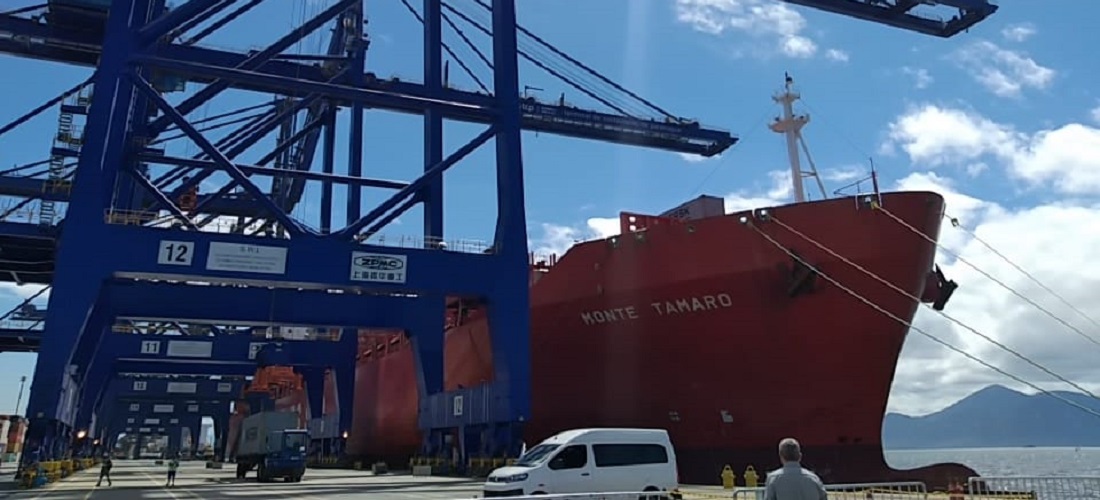
TCP inaugurates expansion works and consolidates its modernization
Oct, 10, 2019 Posted by Sylvia SchandertWeek 201942
TCP, the company that manages the Paranaguá Container Terminal, inaugurated this Thursday (10/10) the expansion works of the Terminal, which received investments of over R$600m. The works include the extension of the quay and the backyard.
With the completion of the works, TCP’s quay increased from 879 meters to 1,099 meters in length and from 40.75 meters to 50 meters in width. It also began the operation of two new container cranes manufactured by the Chinese company ZPMC (Shanghai Zhenhua Port Machinery Co. Ltd).
With the expansion and the consequent possibility of the terminal to operate three of Latin America’s largest and most modern container ships simultaneously – in addition to a car transport vessel (which will dock in exclusive dolphins) – the Paranaguá Container Terminal will increase its handling capacity by 60%, from 1.5m TEUs/year to 2.5m TEUs/year.
The works also include the extension of the terminal backyard, which will be expanded from 330,000 m2 to about 500,000 m2 and are part of the agreement for early renewal of the terminal lease for another 25 years, starting from 2024, signed in April 2016 with the Federal Government.
“With this, we are prepared to support the growing demand for exports, imports, cabotage, and transshipments in our coverage area for the next 30 years,” says Juarez Moraes e Silva, the company’s institutional director.
Technology
The expansion works had advanced technology based on piles instead of landfills, which, in addition to better final quality, ensures less environmental impact. “Usually, the expansion of a terminal is done through a landfill over the sea, which generates more environmental impact and less final quality. In our case, all the expansion was based on piles under the sea,” explains Moraes e Silva.
The berth, for example, has been equipped with double mooring bollards and double tapered fenders, allowing for dredging works of up to 16 meters, which will enable the largest container ships to be operated for the next 30 years. “In addition, it also features signaling systems, LED lighting, fire fighting systems, and an innovative protection system for catching oily waters, which demonstrates TCP’s constant concern for the environment.”
The backyard, in addition to being built on a pile system, was equipped with LED lighting systems, three power substations, drainage systems, monitoring systems that meet the most stringent international standards, and an extensive network of dry infrastructure prepared to receive, in the future, the modernization of electrical container handling equipment. “For environmental protection, the expanded area will also use a protection system so that in case of oil spills and other hazardous products, these products are trapped in the separation system preventing them from reaching the sea,” concludes Moraes e Silva.
-
Other Cargo
Mar, 15, 2024
0
Brazilian exports of poultry genetic material grow 10.1% in 2024
-
Other Logistics
May, 18, 2021
0
Minister presents study for privatization of the Ferroeste railway
-
Meat
Jan, 08, 2020
0
China pig population recovering as African swine flu outbreaks diminish
-
Ports and Terminals
Nov, 27, 2020
0
Santa Fé Port exports 50,000 tons of broken corn since resuming operations in June

